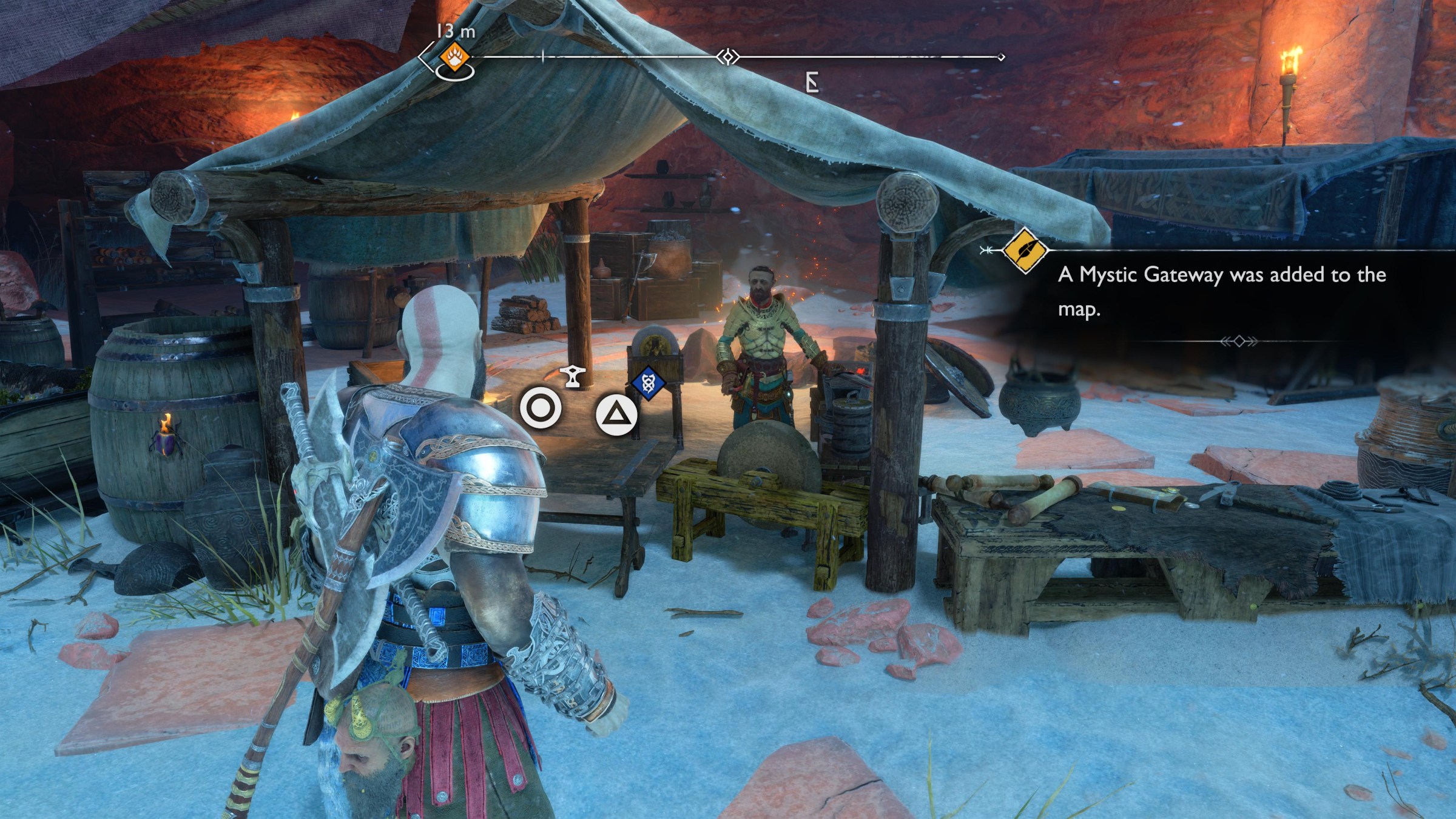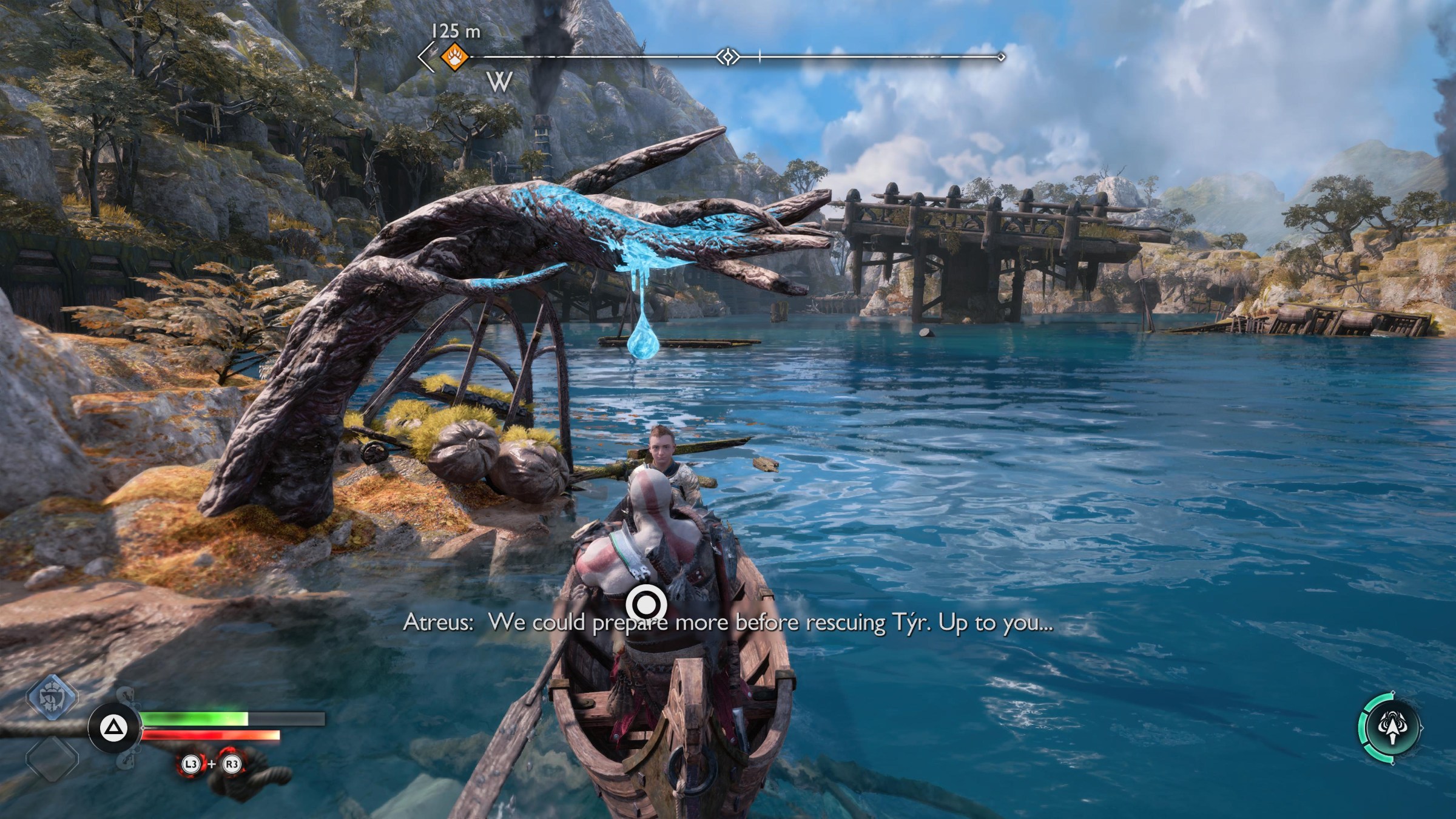God of War Ragnarök, the most lavishly produced parenting handbook of 2022, is available on PC as well as PlayStation 4 and PlayStation 5. For the most part, it’s a natural extension of its predecessor, 2018’s God of War, right down to the way certain gameplay mechanics work (sincerest condolences to everyone who hated those dang Nornir chests). But Ragnarök has its tricks, and it certainly doesn’t explain them all.

Whether you’re a seasoned pro or coming in colder than Niflheim, the following advice should help you guide protagonist Kratos and his son, Atreus, through the nine realms.
You — yes, you — definitely need a lore refresher.
From the main menu, you can access a two-minute lore recap video that runs down key moments from the 2018 game. Don’t even bother watching it. The clip is vague and selectively edited, and honestly ended up leaving me more confused than I was before watching — and that’s from someone who replayed God of War (2018) a month before Ragnarök’s release. The clip also doesn’t even mention the original trilogy, the events of which are discussed far more frequently in Ragnarök than in its predecessor.
If you need a refresher on all the important beats in God of War’s story to date, check out our lore guide, which covers not just the four mainline games but also the important events from the spinoffs.
You can come back for that. Probably.
Like the previous game, God of War Ragnarök is a bit of a Metroidvania. Often, you’ll see an environmental indicator — a glowing crack in a wall, say, or a patch of red bramble — and know in your heart that it’s a pathway but lack the gear to progress. Don’t waste time trying to brute-force a solution. For nearly every one of these instances, you’ll have an opportunity to backtrack — after you eventually unlock the necessary gear.
When you hit an object you can’t pass, Mimir — a decapitated head revived for the explicit purpose of constantly cracking wise — will sometimes straight-up tell you. (“We don’t have the magic for that right now, brother.”) Atreus, meanwhile, might offer advice on how to solve a puzzle. (“We have to find a way to lower the bridge, father.”) If you’re lost or stuck, listen to your travel partners.
Atreus leads you the right way, but don’t follow him just yet.
God of War Ragnarök hews to the game design Law of Forked Roads: When Atreus goes left toward a story mission, that means there’s a collectible to your right.
Entering a mystic gateway heals you
Any time you enter a mystic gateway — God of War Ragnarök’s take on fast travel — you’ll exit with full health and rage meters. Also, if you die, you’ll respawn with full health a few steps before the battle that killed you. In some cases, especially during some of the more drawn-out fights, there’s a strategic case to be made for intentionally throwing the bout at the start so you can try again with a full health bar.
Every side quest is worth it.
God of War Ragnarök’s main missions are called The Path, and are marked by a bright orange icon. You can’t turn this indicator off on the compass (which, by the way, you won’t get until several hours into the game). Side quests, called Favors, are marked by dark blue icons. You can track one at a time on your compass by opening the menu, heading to the Journal tab, hovering over the Favor you’d like to track, then pressing Triangle.
To be clear, some Favors can only rightly be described as fetch quests. For every riveting mission that fleshes out characters and fundamentally changes the game’s world, there are another three about tracking down six fimbulwhatevers. Boring or not, though, they’re all worth doing; completing Favors will give you rare rewards, sometimes even a new weapon. Plus, the objectives for multiple quests will often be in the same vicinity, so you can knock out the fetch quest while working toward the one that’s actually interesting.
You can (and should) get both shields.
Early on, you’ll be able to choose between two shields: the Dauntless shield and the Stone Wall shield. The Dauntless shield significantly improves Kratos’ parry. The Stone Wall shield, meanwhile, is practically impenetrable, and comes with a powerful shield-slam attack. The way Ragnarök frames this choice, you’d think it’s like choosing a starter Pokémon. Not so; you will have gathered enough resources to purchase whatever shield you don’t choose fairly soon. Try one, then try the other. (Various shields will also continue to show up throughout the game.)
You’re supposed to keep your gear the whole game.
God of War (2018) featured a pretty standard equipment loop: Get gear, use it until it’s weak (or you’re bored of it), then sell it off for a fraction of what you paid for it. God of War Ragnarök’s system, however, is a bit more complex. Every set of armor is meant to stick with you the whole game. They are all, in theory, meant to be at parity in terms of power, the idea being that you find a set you like — whether it’s the specific stats it improves or the unique perk it grants — and upgrade it as you go.
Artifacts, however, are meant to be sold.
There’s no need to hold on to collectibles you find across the nine realms. Artifacts you’ve collected will still count toward any collectathons you’re chipping away at, and the few that legitimately are mission critical will be marked with a blue-colored side quest icon. Also, you can sell everything at once by tabbing over to the Artifacts page at any shop and then holding down the Triangle button.
Take the blue fruit.
Don’t miss the Yggdrasil Dew hanging from trees. You’ll get a permanent stat boost for every single drop you find. (They only show up when you’re rowing the boat around Ragnarök’s waterways in regions like Svartalfheim.)
The accessibility settings are ridiculously expansive.
God of War Ragnarök debatably features the most robust settings menu of any modern video game. One allows you to orient Kratos toward the main story objective with the push of a joystick. Another swaps the “dodge” and “interact” button input. (C’mon, everyone knows dodge belongs on Circle!) A third makes it so you pick up health and money automatically. There’s a lot to sift through, so check out our full list of all the accessibility settings you should turn on from day one.
Any settings you’ve changed from their default will be highlighted in blue text.
Nornir chest rewards alternate.
Opening Nornir chests — environmental puzzles that require you to find and usually smash three ancient structures embossed with Nordic runes — is the most effective way to level up Kratos’ stats. Some give you an Idunn Apple, increasing your total health after you find a few. Others give you a Horn of Blood Mead, which does the same to your rage meter. The rewards aren’t random, nor are they predetermined. They alternate with every Nornir chest you open. It’s the game’s way of ensuring Kratos stays as healthy as he is full of rage.
Enemy difficulty is color-coded.
Here’s an easy trick for telling how tough an enemy is: Look at the health bar. Enemies who are lower than your level have green health bars, enemies at or around the same level as you have orange ones, while enemies who outrank you have purple bars. Anything other than that? Yeahhhh, better reload your most recent autosave while you have the chance.
Gold skills can be leveled up.
The more often you perform a combat skill, the more it’ll rank up: from bronze to silver to, finally, gold. Once you get a skill to gold, you can spend 1,000 XP to apply a buff — formally called a mod token — that increases its damage, its stun, its frost or burn effects, and so on. In the skill tree, if an icon is glowing gold, that means it’s eligible for an upgrade. Also, once you’ve unlocked a skill’s buff, you can swap it to another bonus at any point. No need to repeatedly spend 1,000 XP on new perks whenever you want to change them.
 Print
Print




